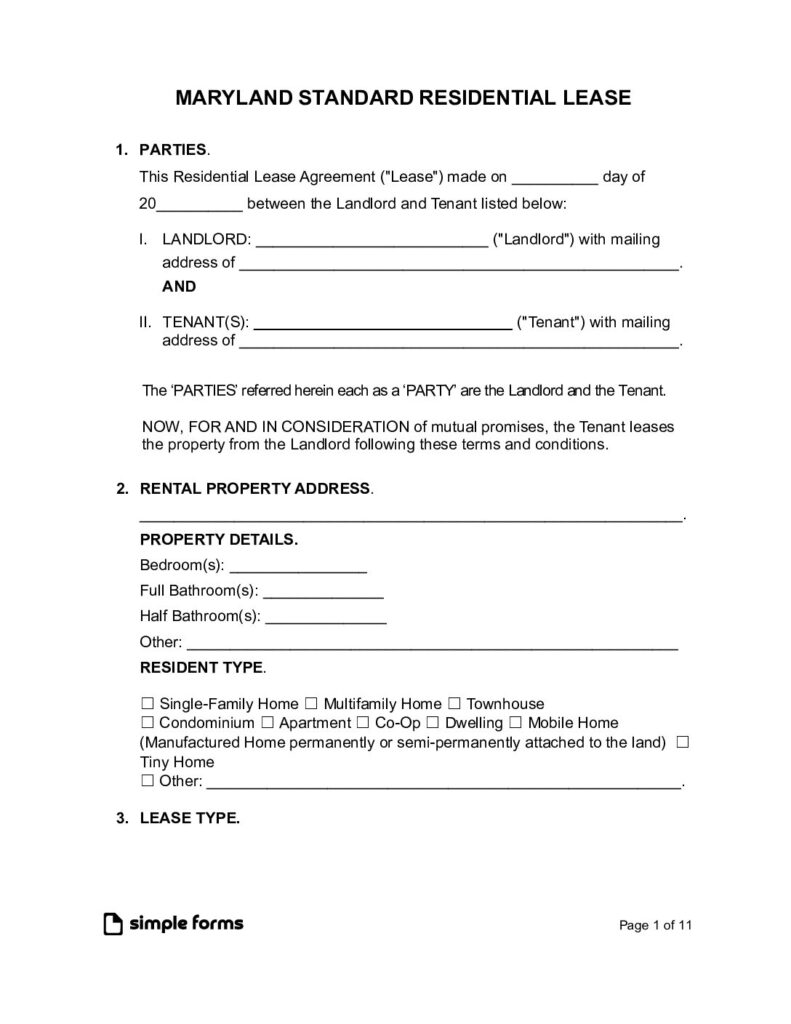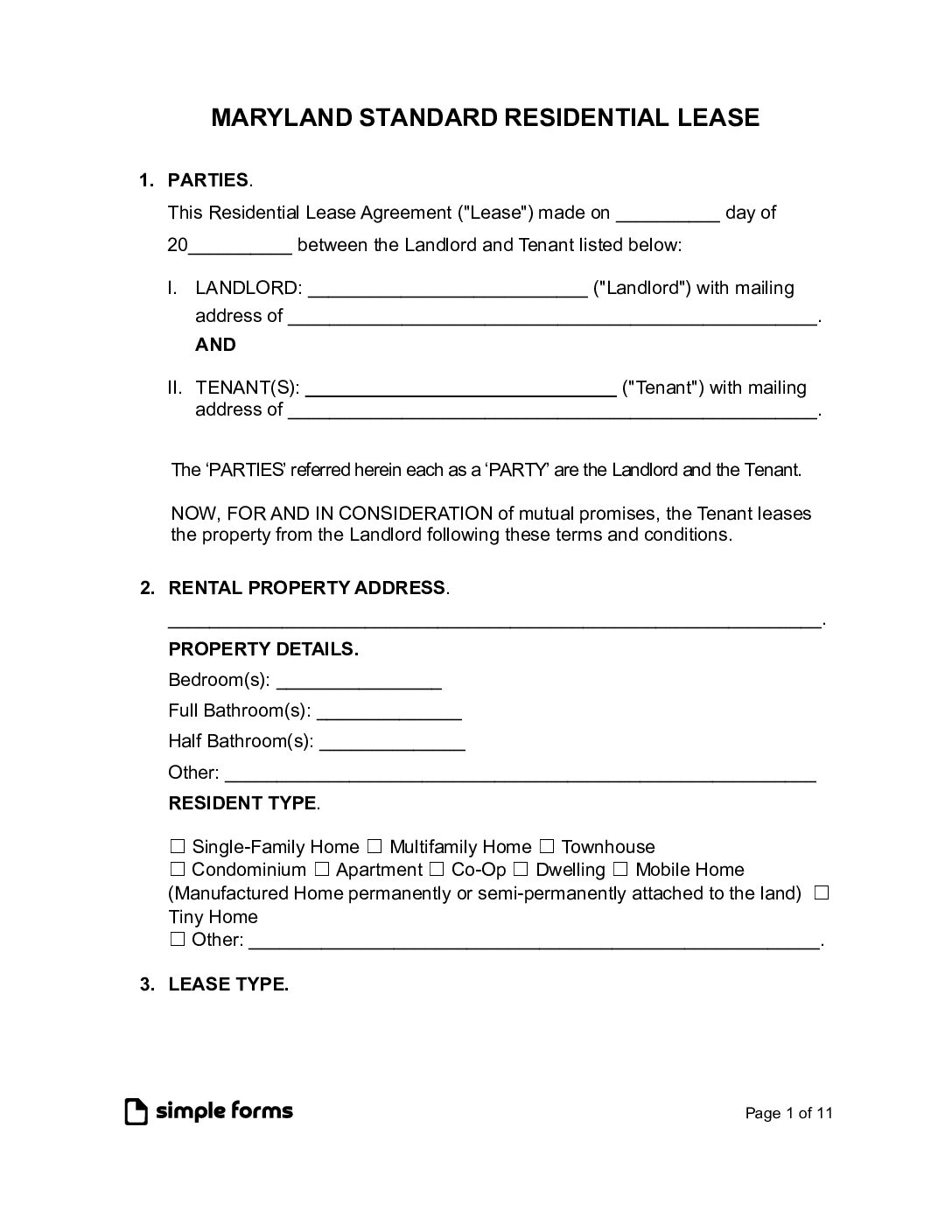By Type
- Standard Residential Lease Agreement [PDF]
- Association of Realtors Lease Agreement[PDF]
- Commercial Lease Agreement [PDF]
- Month-to-Month Rental Lease Agreement [PDF]
- Rent-to-Own Lease Option Agreement [PDF]
- Room (Roommate) Rental Lease Agreement [PDF]
- Sublease Agreement [PDF]
What the Maryland Residential Lease Agreement Form covers?
This document includes the following subjects that pertain to the laws regarding the relationship between the landlord and tenant in Maryland:
- Maryland Landlord-Tenant Act
- Security Deposit Law
- Lease Termination
- Landlord’s Access to the Property
- Rent Due Date and Late Fees
- Eviction Procedures
- Property Maintenance
- Required Disclosure Forms
Maryland Landlord-Tenant Act
Summary (Title 8): The Maryland Landlord-Tenant Act is a guideline for landlords and tenants when leasing residential property. It includes the requirements to make the property habitable and safe, deposit requirements, eviction rules, retaliation, and discrimination laws. It also includes tenants right in foreclosure situations.
Security Deposit Law
Summary (§ 8–203(b)(1)):
- 45 Days – Time limit to return the security deposit.
- Itemized List – Written itemized deductions for any damages must be provided.
- Maximum Amount – One-months’ rent from a new tenant and in certain situations the max amount is two-months rent.
- Receipt and Interest – The landlord must provide a security deposit receipt which shows the deposit has been successfully deposited into a separate bank account. If held in an Interest-bearing account, the landlord must disclose this as well.
- Non-deduction – Normal wear and tear cannot be deducted from the security deposit.
Lease Termination Rules for Landlord and Tenants
Summary (§ 8-401): Tenants are protected in Maryland and are considered the “Covered Individual” if they cannot pay rent. Both parties have the right to terminate the lease under the following conditions.
- Landlord’s Right to Terminate – 30-day notice for tenant breaches or failure to pay rent.
- Tenant’s Right to Terminate – Tenants may provide a 30-day notice if the lease is month-to-month.
Landlord’s Access to the Rental Property
Rent Due Dates and Late Fees
- Grace Period – 10-day notice.
- Maximum Penalty – 5% of monthly rent. For weekly rentals, penalty amount can exceed $3/wk but not $12/mo
- NSF Fee – $35 per bounced check.
Eviction Procedures and Notices
Property Maintenance Requirements
Required Disclosure Forms
Summary: Landlords must disclose the following to tenants prior to the move-in date.
- Lead-Based Paint Disclosure (epa.gov) – Required for all properties built before 1978.
- Landlord Contact Information (§ 8-210(a)(1)) – Must include full legal name and address for tenant notices.
- Move-in/Move-out Checklist (§ 8–203.1(a)) – The rental unit must be inspected before and after the tenant moves in and out.
- Property Habitability Disclosure (§ 8–208(c)) – The agreement must state how the property will be habitable (by the landlord) and must state the tenants responsibilities.
- Ratio Utility Billing System Disclosure [PDF] (§ 8–212.4(c)(1)) – Only for landlords who use this system must put in writing the estimated costs per month that will be billed to the tenant.
- Security Deposit Receipt (§ 8-203.1(a)) – The landlord must provide this to the tenant and it must include tenant rights and landlord obligations.

